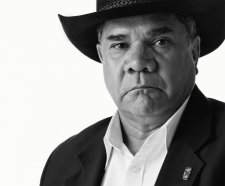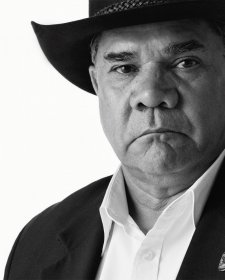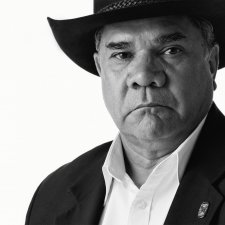Ricky Maynard (b. 1953) is an Indigenous Tasmanian photographer. He is best known for his Tasmanian photographic essays The Moonbird People (1985–1988) and Portrait of a Distant Land (2005), made while he was living and working on Flinders Island in the Bass Strait. Many of these photographs are assertions of culture, declaring the ongoing importance of mutton birding to Indigenous people of the region, whose ancestors had been herded onto Flinders Island to die out in the 1830s. His work from the 1990s includes the series No more than what you see, intended to document the Aboriginal experience of imprisonment, and illuminate the disproportionately high number of Aboriginal people in prison and the tragedy of Aboriginal deaths in custody. Of these pictures, he said 'I urge you the viewer of my work not just to look, rather, to see into the pictures and see this world as I show you now.' In 2000 he travelled to Aurukun, Cape York to document the Wik elders in a series titled Returning to Places that Name Us. He said of this body of portraits 'We need to understand and learn from history because if we repeat history we head for tragedy … I wanted a presence and portraits that spoke, and through this process to present an idea, rather than preach messages.' In 2009 the National Portrait Gallery exhibited Maynard's work in Contemporary Portraits and Open Air: Portraits in the Landscape. Maynard's 2015 series Saddened Were the Hearts of Many Men featured twelve black-and-white portraits of men from Flinders Island and captured the continuing impact of historical trauma. His works are represented in major galleries around Australia.







